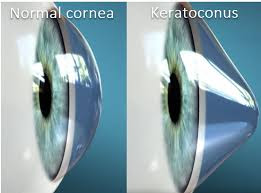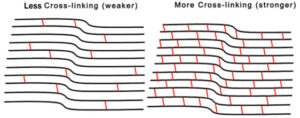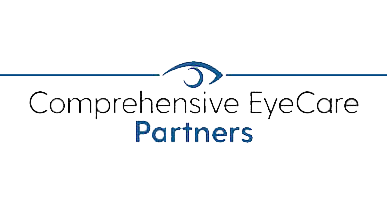Have you recently found out that you have keratoconus? Keratoconus is an eye condition in which the normally dome-shaped cornea gradually thins and bulges outward into a cone shape.
As the cornea protrudes, the collagen tissue responsible for its appearance starts to stretch and break. As a result, the cornea becomes thinner and unstable.
Because your cornea focuses light on the retina, its changing shape causes considerable visual impairment. Experiencing this kind of visual impairment makes daily tasks like driving difficult.
Keep reading to learn more about keratoconus and how corneal cross-linking treats the degenerative condition.
Symptoms of Keratoconus

Keratoconus can affect one or both eyes. However, the symptoms may vary in each eye, and they might change as the eye condition continues to progress. Some of the signs of keratoconus are:
- Eye swelling
- Distorted or blurred vision
- Eyestrain
- Increased sensitivity to light
- Eye redness
- Poor night vision
- Eye irritation
- The appearance of halos and glares
- Regular headaches
- Double vision
- Eye pain
- Frequent prescription changes
Keratoconus often takes years to advance, from the early to late stages. Many patients find out they have the eye condition anywhere between the ages of 10 and 20. But for some people, the eye condition may worsen quickly.
Causes of Keratoconus

Although the cause of keratoconus is still unknown, some factors increase your risk for the eye condition, including:
- Family history of keratoconus
- Thyroid dysfunction
- Excessive and vigorous eye rubbing
- Overexposure to the sun
- Improperly fitting contacts
- Conditions like allergies, eczema, hay fever, and Downs syndrome
Diagnosing Keratoconus
Your eye doctor can diagnose keratoconus during a routine eye examination. Your ophthalmologist may perform the following tests:
- Slit-lamp examination – Checks your eyes for any irregularities
- Corneal pachymetry – Measures the thickness of your cornea
- Keratometry – A diagnostic instrument that measures the anterior curvature of your cornea to determine the amount of astigmatism
- Corneal topography – Provides 3D mapping of the surface of your cornea to look for any abnormalities
Keratoconus Treatment

Without treatment, keratoconus can move into worsening stages. A corneal transplant may be the only option in the late stage of keratoconus.
Early detection and treatment of eye conditions like keratoconus illustrate the importance of attending and scheduling regular eye exams. Your eye doctor can diagnose and stabilize keratoconus early.
Early treatment of keratoconus can help you avoid or delay a corneal transplant. If you’re diagnosed with keratoconus, your eye doctor may start by prescribing glasses and special contact lenses as the first lines of treatment.
But as keratoconus progresses, your ophthalmologist may recommend corneal cross-linking (CXL). CXL is an FDA-approved treatment for mild to moderate keratoconus.
Corneal cross-linking delivers the best outcomes when done before your cornea becomes too thin or too abnormal in shape, causing significant vision loss. When performed early, corneal cross-linking is highly effective in improving your cornea’s shape and vision.
Before undergoing CXL, your ophthalmologist will confirm if you’re a suitable candidate by measuring your corneal thickness. You’ll also have an eye exam to determine how healthy your eyes are and how severely your keratoconus has progressed.
What to Expect During a Corneal Cross-Linking Procedure
Before having corneal cross-linking, you’ll receive numbing eye drops. These will prevent pain and ensure you remain comfortable during the procedure.
After ensuring the numbing eye drops spread across your eye, you will receive riboflavin drops to the surface of your eyes. The surgeon will ensure your eyes contain the proper amount of riboflavin before activating it with controlled UVA light for up to 30 minutes. Corneal cross-linking treatment increases the number of cross-links between collagen tissue fibers in the cornea.
Having more cross-links between collagen fibers in the cornea strengthens the fibers by up to 300 percent and prevents them from stretching and weakening. Once stimulated, cross-linking between collagen fibers continues for about six months.

As a result, CXL addresses the existing corneal bulging and stops or delays keratoconus from getting worse. At the end of the procedure, your surgeon will place a bandage contact lens on your eyes and prescribe antibiotic and anti-inflammatory eye drops.
The minimally invasive procedure takes about 60 to 90 minutes to complete. After completing corneal cross-linking, the bandage contact lens will help your eye heal.
You may experience discomfort, and your vision might become blurry. These symptoms should resolve on their own in a few days.
If your eyes are sensitive to light, wear sunglasses when going outdoors. Call your ophthalmologist right away if you experience pain or your vision worsens suddenly.
You might require new prescription eyeglasses or contacts following your corneal cross-linking procedure.
Types of Corneal Cross-Linking
There are two types of corneal cross-linking: epithelium-off and epithelium-on.
Epithelium-Off Corneal Cross-Linking
During an epithelium-off CXL procedure, the surgeon removes the thin outer layer of your cornea, called the epithelium. Removal of the epithelium ensures proper absorption of riboflavin drops into your corneal tissue.
At Evergreen Eye Center, we only offer our patients epithelium-off corneal cross-linking.
Benefits and Results of Having Corneal Cross-Linking

The corneal shape improves and remains stable in over 95 percent of patients who have epithelium-off corneal cross-linking. This high success rate is critical for patients with progressive keratoconus, often resulting in severe vision loss.
In the remaining 5 percent of patients where keratoconus continues to advance, another treatment might be necessary. It’s important to note that corneal cross-linking doesn’t reverse the distorted or blurred vision that has already occurred. Instead, it aims to prevent your vision from worsening.
Corneal Cross-Linking Specialists
The team at Evergreen Eye Center specializes in keratoconus correction using state-of-the-art corneal cross-linking technologies. Are you searching for more information about keratoconus and corneal cross-linking? Schedule an appointment at Evergreen Eye Center now!

